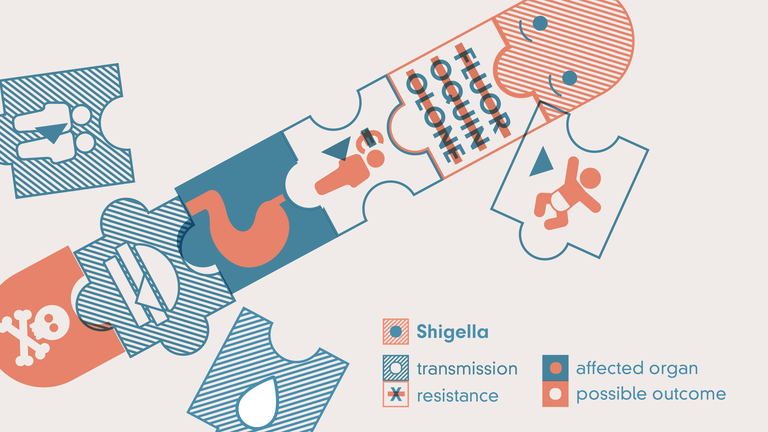Shigella – Fluoroquinolones
The WHO warns of Shigella bacteria resistant to fluoroquinolone-antibiotics. Here you can see their prevalence in Europe’s hospitals. The percentage indicates the ratio of Shigella found to be resistant to this particular antibiotic.
The bug
Shigella are one of the main causes of diarrhea. They can spread through contaminated food and water, but also from person-to-person. Shigella are mainly of concern in poorer regions with lacking hygiene. Of the 165 million cases estimated each year, two-thirds of them are in developing countries. Half a million people die each year of shigella infections. Most heavily affected are children under five years old.
The resistance
Fluoroquinolones work against a broad range of bacteria. The precursors of the substances used today were discovered in 1962. These antibiotics disturb the repair of bacterial DNA and kill the microbe. The substance can be applied orally.

Shigella infects the intestine and causes diarrhea. It is transmitted mainly via food, but also from person to person. It affects mainly people in developing countries and children.
Text: Hristio Boytchev
Illustration: Nick Böse
Graphics: Simon Wörpel
Copy Editing: Christine Coester
